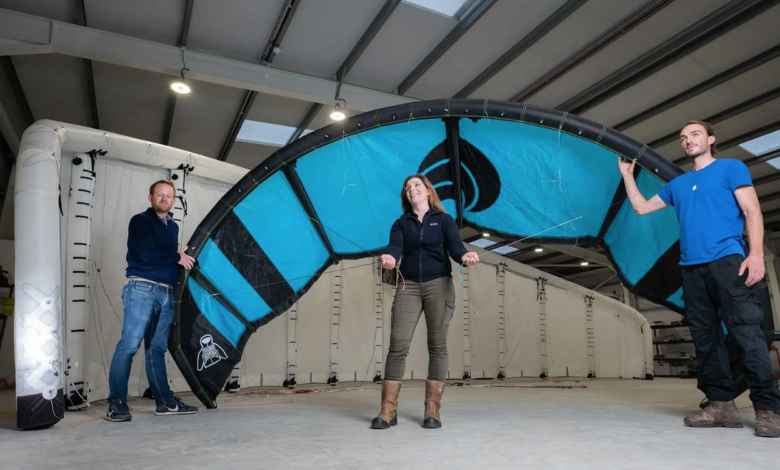Airborne wind return, RWE starts testing

The “return” of Airborne wind
(sustainabilityenvironment.com) – In the late ’10s of the new century, wind kites were one of the promised technologies in the field of renewable: plants able to exploit the strong and more constant winds that blow at high altitudes and free from any recrimination of impact on the landscape. Since then, none of the many engineering proposals have reached the market but confidence in high-altitude wind has not diminished. This is demonstrated by the energy company RWE which is currently in Bangor Erris, County Mayo, Ireland, begun testing at the new Airborne Wind Energy. It is an experimental plant built in collaboration with the Dutch Kitepower and the Mayo County Council as part of the project MegaAwe.
In the late ’10s of the new century, wind kites were one of the promised technologies in the field of renewable: plants able to exploit the strong and more constant winds that blow at high altitudes and free from any recrimination of impact on the landscape. Since then, none of the many engineering proposals have reached the market but confidence in high-altitude wind has not diminished. This is demonstrated by the energy company RWE which is currently in Bangor Erris, County Mayo, Ireland, begun testing at the new Airborne Wind Energy. It is an experimental plant built in collaboration with the Dutch Kitepower and the Mayo County Council as part of the project MegaAwe.
Kitepower Falcon, the new generation of wind kites
In this case, Airborne Wind Energy has received some funding from Interreg North West Europe and today is testing the technology of wind kites Kitepower that since 2016 works on high altitude wind. “We use a large kite with an inflatable hybrid structure and a fixed fiberglass skeleton to keep it open,” explained Johannes Peschel, CEO of Kitepower. The unit “has a wingspan of 60 square meters and weighs only 80 kg, including kite control and sensors. We will test our 100kw Kitepower Falcon system in Bangor Erris. Initially flying it up to 350 meters of altitude and in the coming months testing greater heights. The test hub dedicated to Bangor Erris is the first of its kind and will help us to further accelerate the development of our system”.
The wind kite uses a control unit attached to the cable to control the direction of flight. The rope, made of Dyneema, is in turn attached to a ground station, housed in a container where the electric generator is located. Electricity is produced in the “Reel Out phase” when the kite is flown with an eight-shaped flight pattern with transverse wind, achieving a high tensile force of the cable.





